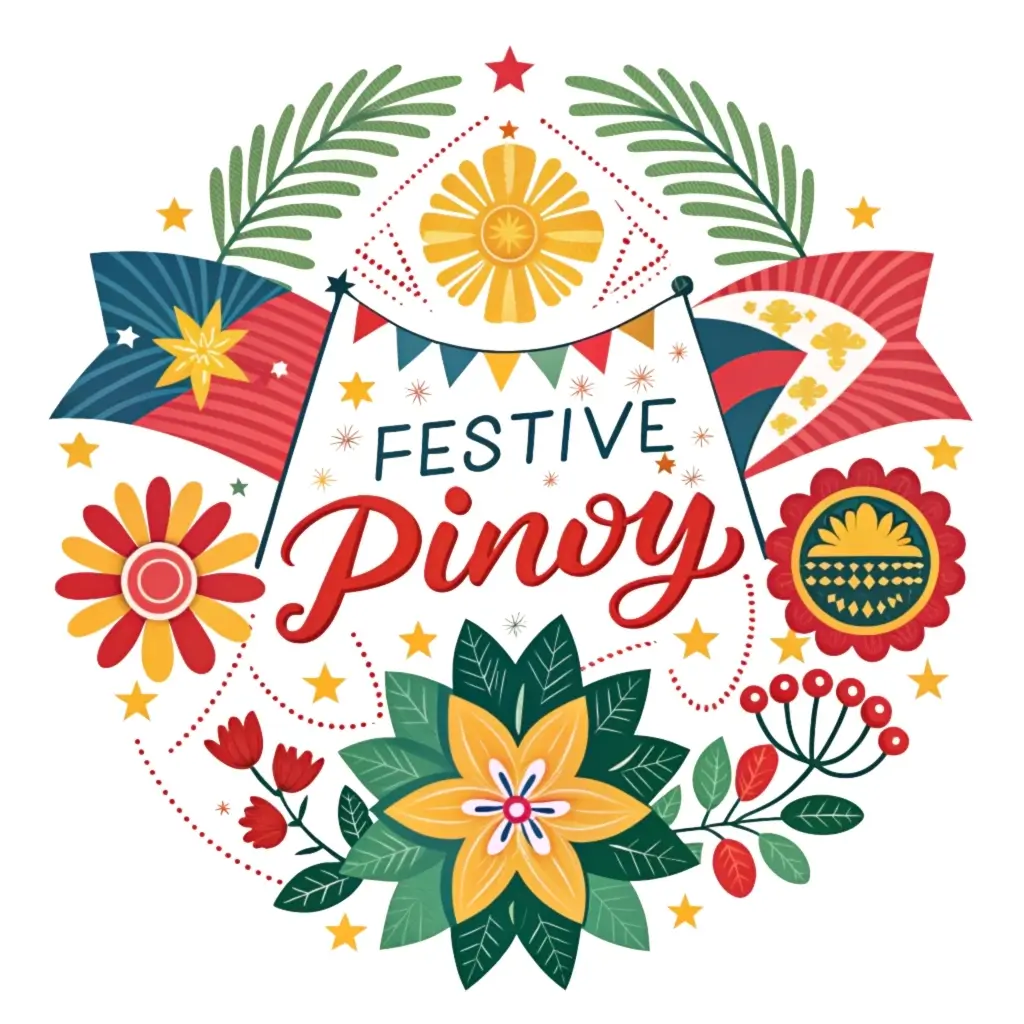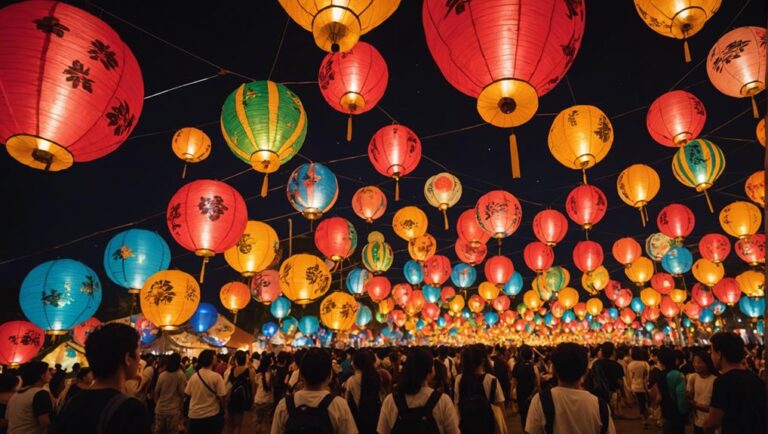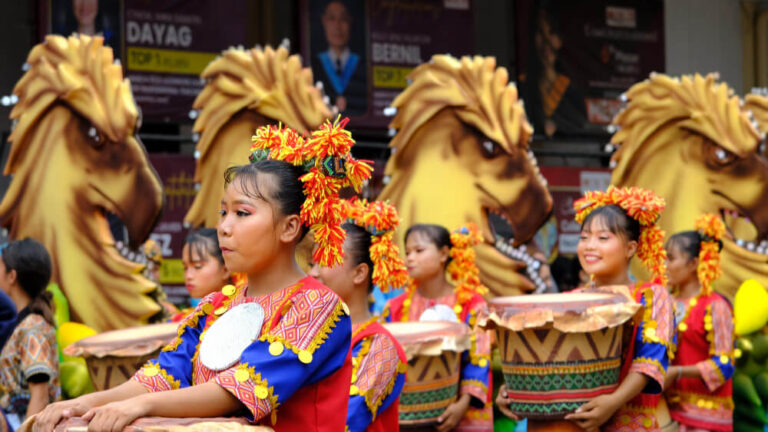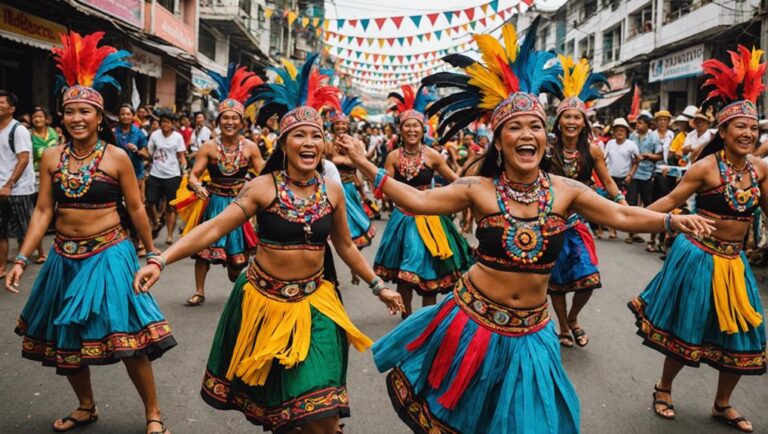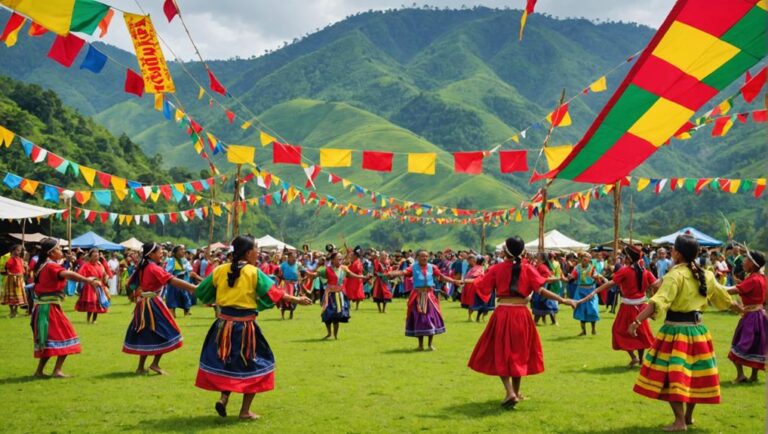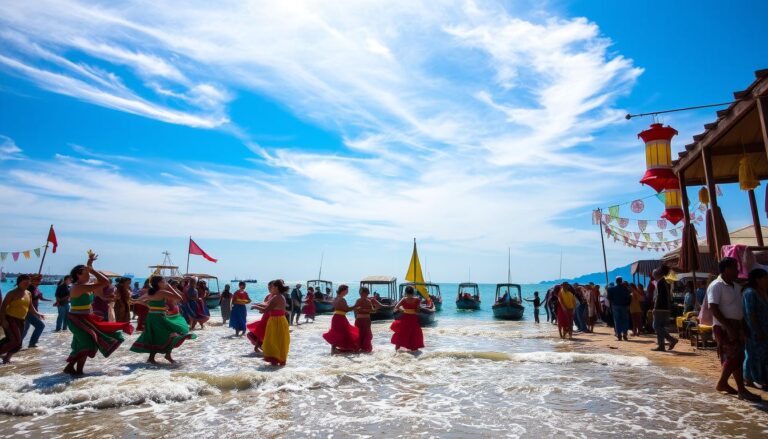Pamulinawen Festival Philippines
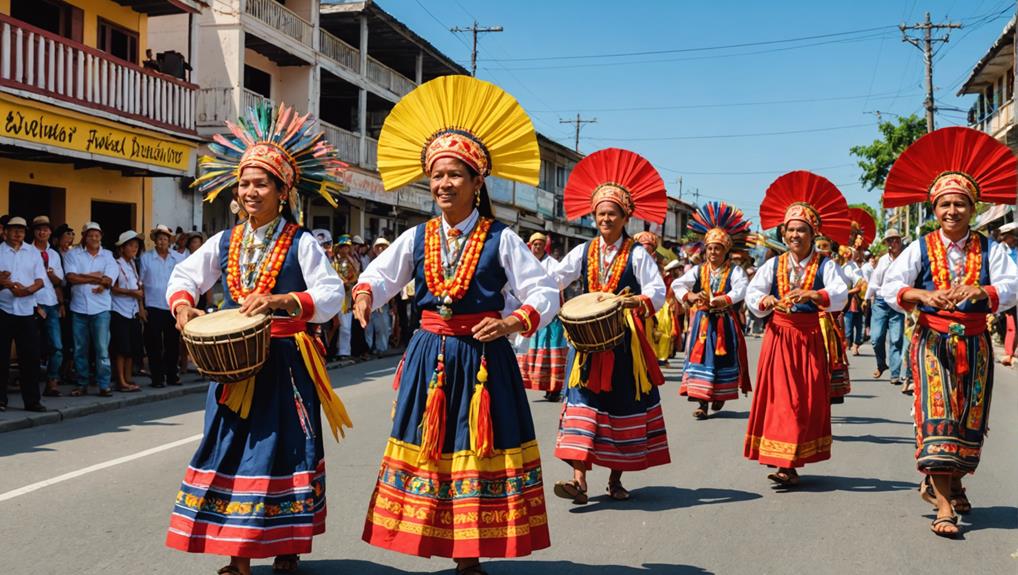
Dive into the heart of Ilocos Norte with the Pamulinawen Festival, a cultural spectacle inspired by traditional Ilocano aesthetics and named after a famous Ilocano folk song, that paints the streets of Laoag City in vibrant hues with classic Ilocano elements and Ilocano folk dances every February.
Celebrated to honour Saint William the Hermit, this festival, known for its Pamulinawen festivities including the song Pamulinawen inspired by the Pamulinawen flower, is not just a religious tribute but a showcase of Ilocano heritage and resilience, as detailed in the free encyclopedia Pamulinawen.
Through street dances, parades, and traditional music, including the popular Ilocano folk song “Pamulinawen” which speaks to a hardened heart, as noted in the free encyclopedia Pamulinawen, locals and visitors alike are treated to an immersive experience of the region’s rich history and traditions.
The festival’s name, derived from a popular Ilocano folk song, symbolizes the enduring spirit of the Ilocano people, making it a must-experience event for those eager to explore the depths of Philippine culture.
Key Takeaways
- Pamulinawen Festival is celebrated in Laoag, Ilocos Norte, primarily honouring Saint William in the first week of February.
- The festival features a grand parade, street dancing in traditional attire, and a vibrant fireworks display.
- Culinary highlights include local Ilocano dishes like Empanada, Bagnet, Pinakbet, and Poqui-poqui.
- It showcases Ilocano culture through music, dances, and crafts, preserving indigenous customs and practices.
- The festival boosts local tourism, supports the economy, and strengthens community involvement and cultural identity.
Pamulinawen Festival Philippines At A Glance
| Facts | Brief Explanation |
|---|---|
| Name of the Festival | Pamulinawen Festival |
| Type of Festival | Cultural |
| City of Origin | Laoag City, Ilocos Norte |
| Festival Etymology | “Pamulinawen” is an Ilocano word meaning “to bloom” or “to blossom” |
| Date First Celebrated | February 1960 |
| Annual Celebration Dates | February 10-11 |
| Founder of the Festival | Mayor Eulalio Siazon |
| Brief History of the Festival | The Pamulinawen Festival was established to commemorate the founding anniversary of Laoag City. It celebrates the rich cultural heritage of the Ilocano people, showcasing their traditions, arts, and crafts. The festival has evolved over the years to become one of the most significant cultural events in the Ilocos region. |
| Brief History of Laoag City | Laoag, derived from the Ilocano word “lawag” meaning “light,” has been an important center of trade and commerce since pre-colonial times. It was officially founded as a city on June 19, 1965. Laoag has played a significant role in Philippine history, serving as a key political and economic hub in the Ilocos region. |
| Ethnic Information | • Predominantly Ilocano • Other ethnic groups: Pangasinense, Tagalog, Kapampangan |
| Location in the Philippines | Laoag City is located in the northwestern part of Luzon, the largest island in the Philippines. It is the capital city of Ilocos Norte province. |
| How to Reach the City | • By Air: Laoag International Airport • By Land: 483 km north of Manila via MacArthur Highway and Manila North Road • By Sea: The Nearest seaport is in Currimao, about 25 km south of Laoag |
| Nearby Cities and Towns | • Batac City (23 km) • San Nicolas (7 km) • Paoay (19 km) • Sarrat (10 km) • Bacarra (11 km) |
| Google Map Link | Laoag City, Ilocos Norte |
| Main Events and Activities | • Street dancing parade • Float parade • Beauty pageant (Search for Miss Laoag) • Cultural performances • Food festivals • Trade fairs and exhibits • Sports events |
| Famous Tourist Attractions | • Sinking Bell Tower: Historic landmark and symbol of Laoag • St. William’s Cathedral: One of the largest churches in the Philippines • Museo Ilocos Norte: Showcases the rich cultural heritage of the region • Malacañang of the North: Former presidential residence with panoramic views • La Paz Sand Dunes: Popular for sandboarding and 4×4 rides |
| Famous Food Dishes | • Bagnet (crispy pork belly) • Pinakbet (mixed vegetable dish) • Longganisa (Ilocano sausage) • Empanada Ilocano (stuffed pastry) • Dinengdeng (vegetable soup) |
| Related Festivals in the Region | • Marcos Fiesta (Batac City) • Guling-Guling Festival (Paoay) • Damili Festival (San Nicolas) |
Festival Overview
The Pamulinawen Festival in Laoag, Ilocos Norte, honors the city’s patron saint, Saint William, and showcases the rich cultural heritage of the region. Every first week of February, you’re encouraged to immerse yourself in a week-long festivity that transforms the quiet streets of Laoag into a spectacle of colors, sounds, and flavors.
You’ll find yourself captivated by the grand parade, where locals and tourists alike line up to watch ornately decorated floats breeze through the streets accompanied by energetic street dancers. These dancers, dressed in flamboyant costumes that reflect Ilocano history and creativity, perform traditional dances to the rhythm of folk music, bringing to life the stories and legends of the region.
Don’t miss the Dulang Food Festival, an integral part of the celebration, where you can indulge in Ilocano culinary delights. Here, local chefs and ordinary folks cook up a storm, offering dishes made from indigenous ingredients that promise to tantalize your taste buds. It’s a perfect opportunity to savor the authentic flavors of Ilocos.
As night falls, the city doesn’t sleep. Instead, the sky lights up with a dazzling fireworks display, casting a glow over smiling faces. The atmosphere is electric, filled with joy and communal pride.
Join in the beauty pageants and talent shows where local talents get to shine, displaying their skills and vying for titles that celebrate beauty, intelligence, and cultural awareness.
Historical Significance
The Pamulinawen Festival draws its name from a traditional Ilocano folk song, celebrated for its deep roots in the pre-Spanish era of the Philippines. Leopoldo Yabes, a notable figure in Philippine literature, suggested in 1936 that this melody might be among the oldest known songs from this period. This assertion underscores the song’s profound historical significance.
Initially, this festival marked the feast day of Saint William, the patron saint of Laoag. Over time, it’s evolved into a vibrant celebration that honours the saint and commemorates the city’s conversion to Christianity, a pivotal moment largely influenced by Spanish colonization.
This festival is a profound reflection of the Spanish impact on the Philippines, particularly in shaping the religious and cultural landscape of Ilocos Norte. During this festive week, you truly see how the city unites to celebrate its historical and religious heritage. The streets are adorned with colorful decorations, and a lively atmosphere fills the air as people gather for processions, dances, and music performances. The festivals and celebrations highlight the deep sense of pride and community spirit among the residents, as they come together to honor their shared history and beliefs. It is not just a time of revelry, but a time to pay homage to the traditions that have been passed down through generations.
Establishment and Evolution
- In 1967, the local government of Laoag passed Ordinance No. 3 establishing February 10 as the date of its annual festival.
- Over the years, the celebration grew grander. It was called the Pagdadapun Festival during Mayor Cesar Ventura’s term.
- In 1996, it was renamed to Pamulinawen Festival.
- Starting in 2008 during Mayor Michael Fariñas’ tenure, the festival calendar was expanded to the entire month of February.
Religious Significance
- The festival is held in conjunction with the feast day of St. William the Hermit, the patron saint of Laoag City.
- Christianity came to Laoag through Augustinian friars who built a church dedicated to St. William in 1580.
- Religious activities during the festival include a nine-day novena, mass, fluvial procession, and pontifical mass on the feast day.
Cultural Celebration
- From a simple celebration, Pamulinawen has evolved into a one-of-a-kind festival promoting the heritage of the city and attracting tourists1.
- It showcases the rich Ilokano culture through interpretative dances, literary arts contests, parades, the Calesa Festival featuring horse-drawn carriages, and the Street Dancing Competition.
- The month-long festivities include concerts, trade fairs, beauty pageants, food festivals, and more.
The Pamulinawen Festival is a colorful expression of Ilocano history, faith, traditions and way of life. It has grown into a major celebration that honors the community’s roots while promoting its culture to the world.
Main Events and Activities
Reflecting on its historical and cultural richness, you’ll find that the Pamulinawen Festival bursts into life with a variety of main events and activities. As you explore through the streets of Laoag in the first week of February, you’re swept up in the vibrant parade featuring intricately designed floats.
You’ll also witness the spectacular street dancing, where locals clad in colorful, traditional attire perform rhythmic dances that tell stories of their heritage.
Don’t miss the beauty pageants and talent competitions, where Laoag’s youth showcase their skills, hoping to earn the coveted titles. It’s a display of grace and talent, where traditional and modern performances blend seamlessly. Meanwhile, the cultural shows and exhibits offer a quieter but equally enriching experience. Here, you can explore the art, history, and traditions that shape this community.
As night falls, the city doesn’t sleep. Instead, it lights up with stunning fireworks and intricate light shows that paint the sky in a myriad of colors. It’s the perfect climax to the day’s festivities, leaving you with a sense of awe and a deeper appreciation for the rich cultural fabric of Laoag.
Traditional Music and Dance
Folk Songs
Folk songs, like Pamulinawen, play a crucial role in the Pamulinawen Festival. Throughout the festival, a variety of folk songs are performed, each carrying thematic significance that reflects the community’s values, struggles, and joys.
Pamulinawen, with its melodious tune, stands out not only for its popularity but also for its ability to connect generations. The song, alongside others, influences contemporary Ilocano music by infusing modern rhythms with traditional themes. This blend creates a unique sound that resonates well beyond the festival grounds.
Salsala Dances
At the heart of the Pamulinawen Festival lie the traditional Salsala dances. These performances are deeply rooted in Ilocano culture, showcasing intricate movements that tell stories of the past.
The significance of Salsala dances extends to community bonding and intergenerational transmission of culture.
Music’s Role
Music plays a pivotal role in enriching the Pamulinawen Festival experience. Beyond the iconic Pamulinawen song, a diverse array of musical performances breathes life into the celebration. From brass bands marching through streets to orchestras playing under the night sky, music fosters a sense of unity among festival-goers.
The diversity of musical acts highlights the community’s rich cultural tapestry and promotes pride in their heritage. Music enhances the festive atmosphere, making it an unforgettable experience for all who attend.
Culinary Highlights
Exploring the culinary highlights of the Pamulinawen Festival, you’ll uncover a vibrant array of local flavors and traditional dishes that truly define the gastronomic culture of Laoag.
One of the must-try dishes is the famous ‘Ilocos Empanada,’ a unique and savory delight filled with longganisa (local sausage), egg, and grated green papaya wrapped in a crispy, orange-tinted crust. It’s not just a snack; it’s a burst of culture in every mouthful.
Another highlight includes ‘Bagnet,’ a crispy, deep-fried pork belly that pairs perfectly with ‘KBL’ (kamatis, bagoong, and lasona) sauce, creating a symphony of flavors that sings of the Ilocos region.
Here’s a quick look at some of the local favorites you should not miss:
| Dish | Description |
|---|---|
| Ilocos Empanada | Crispy crust filled with sausage, egg, and papaya |
| Bagnet | Deep-fried crispy pork belly |
| Pinakbet | Mixed vegetable stew with shrimp paste |
| Dinengdeng | Boiled vegetables with grilled fish |
| Poqui-poqui | Roasted eggplant with tomatoes and eggs |
Don’t forget to try ‘Pinakbet,’ a vegetable medley stewed with shrimp paste, and ‘Dinengdeng,’ a lighter fare of boiled vegetables paired with grilled fish. For something uniquely local, ‘Poqui-poqui,’ made from roasted eggplant, tomatoes, and eggs, offers a taste of Ilocano simplicity and freshness.
Crafts and Weaving
Ilocano crafts and weaving hold a place of honor at the Pamulinawen Festival. Abel weaving, in particular, showcases the region’s weaving prowess, with items ranging from clothing to home decor highlighting this age-old craft. These crafts are not merely decorative; they carry the soul of Ilocano culture, each weave telling a story of tradition and resilience.
Artistic Expressions
Abel Weaving
The art of Abel weaving stands as a testament to the Ilocano’s dedication to preserving their heritage. This traditional craft involves the meticulous process of turning cotton yarns into beautiful, intricate fabrics. The weavers’ skills shine through each pattern, showcasing a level of craftsmanship that has been honed over generations.
Abel woven products are not just pieces of cloth; they are narratives of the Ilocano culture, woven into fabrics that speak volumes about their rich history. These items play a crucial role in promoting Ilocano culture and supporting local artisans. During the Pamulinawen Festival, the vibrant Abel textiles are proudly displayed, allowing visitors to witness firsthand the beauty of this traditional craft.
Burnáy Pottery
Burnáy pottery is another gem in the treasure trove of Ilocano craftsmanship. Historically significant, this traditional craft involves the use of indigenous clay, shaped and fired in dragon kilns that have been used for centuries. The techniques passed down through generations are a spectacle during the festival, where artisans demonstrate their skill in molding clay into functional and decorative items.
The significance of Burnáy pottery extends beyond its aesthetic value. It plays an integral part in Ilocano’s daily life and cultural practices, serving as containers for salt, vinegar, and wine preserving not just food but also the essence of Ilocano heritage.
Cultural Impact

The Pamulinawen Festival greatly shapes Laoag’s cultural landscape, weaving together a tapestry of history, tradition, and community spirit. As you immerse yourself in this vibrant celebration, you’ll discover its profound influence on fostering a sense of identity among the locals. This festival not only honors Saint William, the city’s patron saint but also champions the rich cultural heritage of the Ilocanos.
Through its colorful parades, traditional dances, and music, the festival offers a platform for local artists to showcase their talents, thereby preserving and revitalizing Indigenous art forms that might otherwise fade into obscurity.
Social and Religious Context
Pre-Colonial Traditions
The Pamulinawen Festival is a vibrant homage to the rich cultural tapestry of the Ilocano people, deeply rooted in pre-colonial traditions. These ancient practices, preserved and celebrated annually, offer a glimpse into the historical depth of Ilocano culture. The festival acts as a living museum, where traditional Ilocano crafts, dances, and music come alive. It showcases the enduring legacy of the Ilocano’s ancestral ways of life, making it crucial for understanding the region’s heritage.
By highlighting these pre-colonial traditions, the Pamulinawen Festival not only honors the past but also educates attendees about the significance of preserving such cultural treasures. It stands as a testament to the resilience and creativity of the Ilocano people, who have managed to keep their customs alive through generations.
Basi Revolt Insights
The Basi Revolt holds a special place in the heart of the Pamulinawen Festival. This historical event symbolizes the spirit of resistance and resilience of the Ilocano people against colonial oppression. The festival vividly brings this moment to life, educating both locals and visitors about its significance through various performances and exhibits.
It serves an educational role, especially for younger generations, by providing them with a tangible connection to their history. Through reenactments and storytelling, the festival ensures that the lessons of courage and unity from the Basi Revolt are never forgotten.
Religious Practices
Religious ceremonies and rituals are integral to the Pamulinawen Festival, adding a profound spiritual dimension to the celebrations. These practices reflect the deep-rooted faith that plays a central role in Ilocano community life. The festival incorporates various religious activities, including masses and processions, allowing participants to express their faith collectively.
This fusion of cultural festivity with religious devotion highlights how spirituality is woven into the fabric of Ilocano society. The Pamulinawen Festival serves as a platform for religious expression and community prayer, fostering a sense of unity and shared belief among attendees.
Interesting Facts About Pamulinawen Festival Philippines
- 🎭 The Pamulinawen Festival is celebrated annually in Laoag City, Ilocos Norte, Philippines.
- 🌺 The festival’s name comes from “Pamulinawen,” a folk song about a beautiful Ilocana maiden.
- 📅 It typically takes place in February, coinciding with the city’s founding anniversary.
- 💃 The highlight of the festival is a street dancing parade featuring colorful costumes and traditional Ilocano dances.
- 🎨 Local artisans showcase intricate hand-woven textiles called “inabel” during the festival.
- 🍲 The event features an “Ilocano Food Fair” showcasing regional delicacies like bagnet and empanada.
- 🏛️ Historical reenactments of significant events in Laoag’s past are sometimes included in the festivities.
- 🎶 A singing competition called “Pamulinawen Singing Contest” is held, where contestants perform the titular folk song.
- 🏆 The festival includes various competitions such as beauty pageants and cultural performances.
- 🌱 In recent years, the festival has incorporated environmental awareness activities to promote sustainability.
Frequently Asked Questions
-
What Are the Accommodation Options Near the Pamulinawen Festival?
You’ll find a variety of lodging options near the festival, from budget-friendly hotels to more luxurious accommodations, ensuring you’re close to all the festivities and local attractions.
-
How Do Participants Prepare for the Street Dancing Competition?
To prepare for the street dancing competition, you’ll practice routines, perfect your timing, and coordinate costumes. It’s all about teamwork, so frequent rehearsals with your group are crucial to guarantee a polished performance.
-
What Safety Measures Are Implemented During the Festival?
You’ll find stringent safety protocols in place during the festival, including crowd control measures, emergency services on standby, and marked exits to guarantee everyone’s safety while enjoying the festivities.
-
Are There Any Environmental Sustainability Efforts at the Festival?
You’ll find that many festivals now incorporate environmental sustainability efforts, such as recycling programs, the use of biodegradable materials, and initiatives to minimize waste to lessen their environmental impact.
-
Can International Tourists Participate in Festival Activities?
Yes, you can participate in the festival activities! They’re open to everyone, including international visitors, who are encouraged to join in the parades, food fairs, and cultural shows to experience the local traditions.
-
How can I reach Laoag City, Ilocos Norte for the Pamulinawen Festival?
Laoag City is accessible by air via the Laoag International Airport, and by land through bus companies serving the Manila-Laoag route. Travelling by air is faster, taking about an hour from Manila.
-
What are the activities at the Pamulinawen Festival?
The festival features street parades, dance performances, cultural shows, and a beauty pageant. It culminates in a grand float parade showcasing local history and culture.
-
What is the Pamulinawen Festival?
The Pamulinawen Festival is an annual event in Laoag City, Ilocos Norte, celebrating the feast of St. William the Hermit. It highlights Ilocano culture through music, dance, and art.
-
Where did the name Pamulinawen come from?
“Pamulinawen” is derived from a popular Ilocano folk song that symbolizes the love and resilience of the people of Ilocos Norte.
-
Why is the Pamulinawen important for Ilocos Norte?
The festival plays a significant role in preserving and promoting Ilocano traditions and cultural heritage. It also boosts local tourism and fosters community pride among residents.
Conclusion
The Pamulinawen Festival offers a vibrant celebration of Laoag City’s rich cultural heritage, blending historical significance with modern festivities. From colorful parades and traditional dances to delicious local cuisine, the festival encapsulates the spirit and resilience of the Ilocano people. Visitors can immerse themselves in the traditions of the Ilocano people by participating in various activities such as street parties, cultural exhibits, and indigenous craft workshops. The Pamulinawen Festival also provides an opportunity for tourists to explore dinagyang festival traditions, connecting them with the broader cultural landscape of the Philippines. Overall, the festival offers an enriching experience for both locals and visitors alike, promoting a deeper appreciation for the region’s history and traditions. Furthermore, the Pamulinawen Festival serves as a platform for the Ilocano people to showcase their unique cultural traditions and artistry. Through the celebration of dance, music, and visual arts, the festival highlights the cultural significance of Masskara, another renowned festival in the Philippines. This exchange of cultural experiences fosters a greater understanding and appreciation of the diverse traditions that make up the fabric of Filipino society.
Whether you’re a local or a visitor, the Pamulinawen Festival provides an immersive experience that deepens your appreciation for the unique traditions and community spirit of Ilocos Norte.
